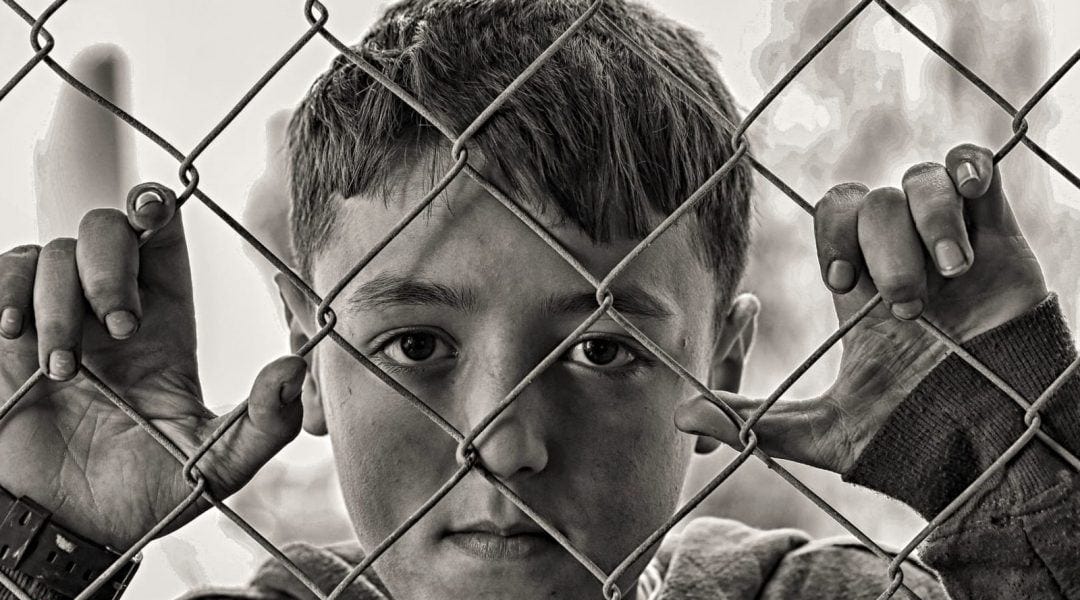This isn't the 50's or 60's
Everyone has their own opinions of course but this is from Jonathan Haidt. What's your thoughts? Is this still hickish? Or is there an argument to made for more independent play? (This isn't intended as a gotcha question, I'm open to hearing varying viewpoints.)
What was different about the '50's and '60s compared to today vis a vis free play?
Play Deprivation Is A Major Cause of the Teen Mental Health Crisis
Allowing more unsupervised free play is among the most powerful and least expensive ways to bring down rates of mental illness
The central idea of my forthcoming book,
The Anxious Generation, is that we have overprotected children in the real world, where they need a lot of free play and autonomy,while underprotecting them online, where they are not developmentally ready for much of what happens to them. Much of my thinking about the importance of free play comes from
Peter Gray, a professor of psychology at Boston College who is one of the world’s leading experts on the psychology of play. See his
powerful TED talk, where he lays out the evolutionary origins of play—a necessity for all young mammals. He then shows how we have systematically deprived children of free play since the 1970s and shows that adolescents' mental health has declined substantially over the same period. He notes that this is a correlation, not proof of causation, although experiments with animals support the claim that play deprivation causes anxiety and poor social development.
Peter gave that talk in 2014. Since then, the mental health of children and adolescents has worsened, and evidence has increased showing that Peter was correct. Peter recently published a major review article in the Journal of Pediatrics titled
Decline in Independent Activity as a Cause of Decline in Children’s Mental Well-being: Summary of the Evidence. I think it’s among the most important essays ever written on play. I was planning to write a summary of the article for the After Babel Substack, but a few days ago, I got Peter’s own summary of the article, which he posted on his new Substack,
Play Makes Us Human, which you can find and subscribe to here:
I asked Peter if I could repost his
Substack essay at After Babel. He said yes, and you’ll find it below. Peter and I disagree on whether
smartphones and social media are also major causes of the teen mental health crisis, as you’ll see. But we both agree that play deprivation is a major contributing cause and that anyone who is serious about the mental health of children and teens (and adults) should be up in arms about what America and many other countries have done to prevent children from playing in the ways they need and want to play.
I note that Peter is a co-founder, with me, Lenore Skenazy, and Daniel Shuchman, of
LetGrow.org, where we both serve on the board. LetGrow offers many resources for
parents,
schools, and
state legislators that want to act on Peter’s advice and introduce more free play and autonomy into children’s lives.
—
Jon Haidt
In this letter, I summarize the contents of an article that anthropologist David Lancy, developmental psychologist David Bjorklund, and I published recently in the Journal of Pediatrics. For the full account, including citations to research supporting each point, see the article
here. Throughout this letter, I use the term “children” to refer to everyone under 18 years old unless otherwise specified.
We began the article with two very well-established and disturbing facts.
Two Very Well-Established and Disturbing Facts
Children’s freedom to play and explore has declined greatly over the last half-century.
The first fact is that over the past 5 decades or more we have seen, in the United States, a continuous and overall huge decline in children’s freedom to play or engage in any activities independent of direct adult monitoring and control. With every decade children have become less free to play, roam, and explore alone or with other children away from adults, less free to occupy public spaces without an adult guard, and less free to have a part-time job where they can demonstrate their capacity for responsible self-control. Among the causes of this change are a large increase in societal fears that children are in danger if not constantly guarded, a large increase in the time that children must spend in school and at schoolwork at home, and a large increase in the societal view that children’s time is best spent in adult-directed school-like activities, such as formal sports and lessons, even when not in school.
https://substackcdn.com/image/fetch...8a3-b808-49ea-879f-14f67cf330bf_1080x675.jpeg
Children’s mental health has declined greatly over the last half-century.
The second undisputed fact is that over these same decades, rates of anxiety, depression, and suicide among young people have increased enormously. Using data from standard clinical questionnaires administered to school-aged children over the decades, researchers have estimated that the rates of what we now call major depressive disorder and generalized anxiety disorder increased by roughly 5- to 8-fold during the second half of the 20th century, and other measures indicate that they have continued to increase during the first two decades of the 21st century.
Perhaps the most compelling and disturbing evidence comes from research on suicides and suicidal thoughts. Data compiled by the Centers for Disease Control and Prevention indicate that the rate of suicide among children younger than age 15 rose 3.5-fold between 1950 and 2005 and by another 2.4-fold between 2005 and 2020. By 2019, suicide was the second leading cause of death for children from age 10 through 15, behind only unintentional injury (including traffic fatalities). Moreover, the 2019 Youth Risk Behavior Surveillance System survey revealed that during the previous year 18.8% of US high school students seriously considered attempting suicide, 15.7% made a suicide plan, 8.9% attempted suicide one or more times, and 2.5% made a suicide attempt requiring medical treatment.
Such findings led the American Academy of Pediatrics, American Academy of Child and Adolescent Psychiatry, and Children’s Hospital Association to issue, in 2021, a joint statement to the Biden administration urging that child and adolescent mental health be declared a “national emergency.”
Reasons to Believe that the Decline in Freedom is a Major Cause of the Decline in Mental Health
You would think it would be obvious that taking away free play and other freedoms to act independently would make children anxious, depressed, and in some cases suicidal, but we adults are remarkably skilled at burying our heads in the sand on this issue. If you read the popular press, you would think the problem is screens and social media, or almost anything else other than the fact that we have more or less locked children up around the clock. So, here is some of the evidence we spelled out in the Journal of Pediatrics article.
Immediate effects of play and other independent activity on mental well-being.
Research, proving what should be obvious, shows that play is a direct source of children’s happiness. When children are asked to depict or describe activities that make them happy, they depict or describe scenes of play. There is also research showing that when children are allowed a little more play—such as when schools offer a little more recess—the kids become happier. Research also reveals that children consider play to be activity that they themselves initiate and control. If an adult is directing it, it’s not play. The joy of play is the joy of freedom from adult control. Other research reveals that the rates of emotional breakdowns and suicides among school-aged children decline markedly every summer when schools shut down and rise again when schools open. During the summer children have at least some more opportunity for independent activity than they do during the school year. There is also evidence that teens who have part-time jobs are happier than those who don’t, because of the sense of independence and confidence they gain from the job.
Long-term effects of play and other independent activity on mental well-being.
Beyond promoting immediate mental well-being, play and other independent activities build mental capacities and attitudes that foster future well-being. Research shows that people of all ages who have a strong
internal locus of control (internal LOC), that is, a strong sense of being able to solve their own problems and take charge of their own lives, are much less likely to suffer from anxiety and depression than those with a weaker internal LOC. Obviously, however, to develop a strong internal LOC a person needs considerable experience of actually being in control, which is not possible if you are continuously being monitored and controlled by others.
Other research has assessed relationships between the amount of time children have to direct their own activities and psychological characteristics predictive of future mental health. Such research has revealed significant positive correlations between the amount of self-structured time (largely involving free play) young children have and (1) scores on tests of executive functioning (ability to create and follow through on a plan to solve a set of problems); (2) indices of emotional control and social ability; and (3) scores, 2 years later, on a measure of self-regulation.
Moreover, two retrospective studies with adults have shown that those who recall more instances of independent play when they were children are, by various indices, happier and more successful in adulthood than those who recall less such independence. And research with college students reveals that those with over-controlling parents (as assessed with questionnaires) fare more poorly psychologically than those whose parents are less controlling. These and other correlational studies all point in the same direction. Opportunities to take more control of your own life when young predict better future well-being.
Play is the primary vehicle through which children satisfy psychological needs essential to mental health.
Allowing more unsupervised free play is among the most powerful and least expensive ways to bring down rates of mental illness

www.afterbabel.com







